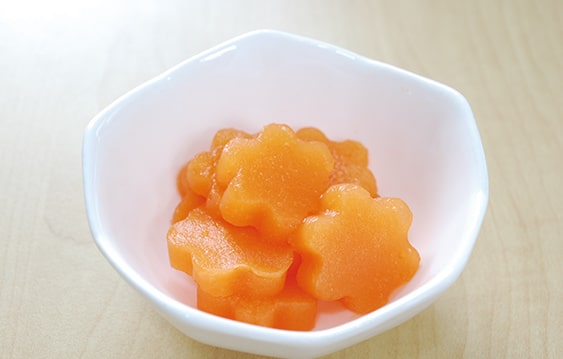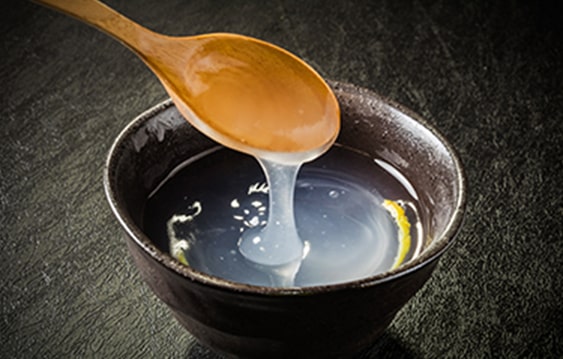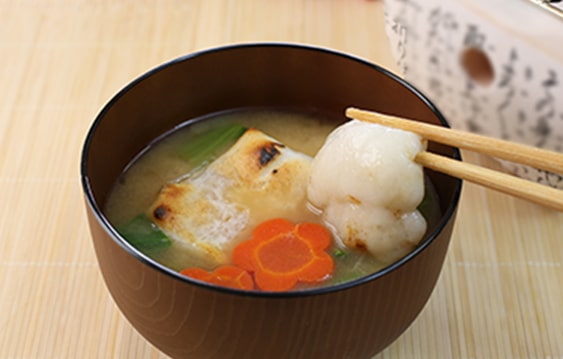Patient Care Foods
Patient care food requires adjusting the shape and "softness" of foods to match the chewing and swallowing capability of the eater. Alginate can produce a variety of textures, from flexible to rigid gels. As the gels are heat resistant, it is possible to solidify hot food and sterilize solidified food.
Applications and effects
※Alginic acid and all products derived from it are collectively called Alginate. Please refer to the correct product name for each application.

Soft foods
Alginate-molded foodstuffs can be produced with a range of firmness.
![]()
![]()

Remolding or reshaping ingredients is one of the main alginate characteristics. Alginate can gel and shape a variety of food ingredients and it can also control the firmness of the gel. Foods solidified with alginate do not collapse when heated and can be eaten at a range of temperatures.
- 【Alginate to be used】
- KIMICA ALGIN M406
- 【Recommended dosage】
- 0.5~1% of total amount

Hydration jelly
Makes a soft, easy to swallow jelly.
![]()
![]()

To prevent aspiration in people with swallowing difficulties, the liquid part of the food is usually thickened. However, this also leads to the liquid becoming sticky and sometimes makes it uncomfortable to drink even thickened water or tea. Alginate can be gelled as a jelly with cold water and warm tea. Because it is a soft jelly, swallowing is easy and the texture is not sticky.
- 【Alginate to be used】
- KIMICA ALGIN M406
- 【Recommended dosage】
- 0.3~0.6% of total amount

Rice cakes
Hard to fragment when boiled, improved texture and less sticky when swallowed.
![]()
![]()

Alginate blended rice cakes are harder to fragment when boiled, have a better texture and a reduced stickiness. Soft rice cakes tend to stick in the throat but the use of alginate can prevent this.
- 【Alginate to be used】
- KIMICA ALGIN M406
- 【Recommended dosage】
- 0.2~1% against rice